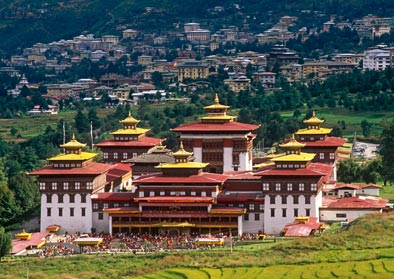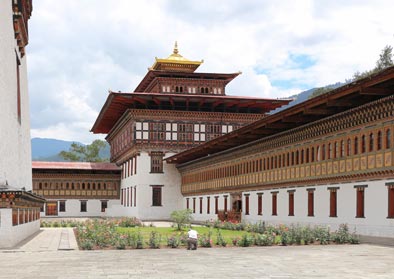Tashichho Dzong
One of the most popular and biggest landmarks in Thimphu, the Tashichho Dzong is the main secretariat building, located 2kms away from the main town. The Dzong houses the offices of the King and the Throne Room, along with the central monastic body and some government ministries. An impressively large structure, surrounded by well-kept lawns and beautiful gardens, the Dzong is located close to the Thimphu town.


History of Tashichho Dzong
Meaning the fortress of “auspicious doctrine”, the Tashichho Dzong has traditionally been the summer capital of the country. Built in the year 1641 by Zhabdrung Ngawang Namgyal, the Dzong was rebuilt in its present form in the year 1965 by the Third King of Bhutan Jigme Dorji Wangchuck.
About the Dzong and its architecture
The Dzong houses the throne room and offices of the king, the secretariat and the ministries of home affairs and finance, along with other government departments. With two storied main structure, and four stories towers at each corner, topped by triple-tiered golden roofs, the center of the building is a large central tower called utse.
It is also the headquarters for central monastic body of Bhutan. The outer structure of the Dzong is two storeys high, and the four corners have three storey towers projecting out over the walls. The outer walls of the Dzong are built with trimmed and fitted granite blocks, and the courtyard here is tiled with rectangular stone slabs.
The Dzong has two main entrances, while one of them leads to the administrative section, the other leads to the monasic quarter. The monasic quarter is where the dances of the annual tsechu festival are performed. An excellent example of the traditional cantilever bridge can be seen just below the Dzong.
